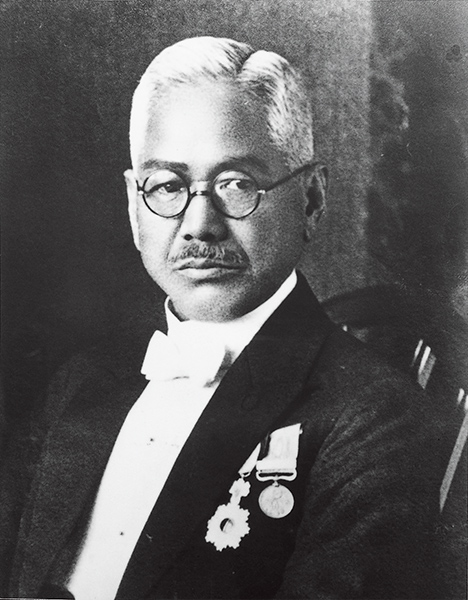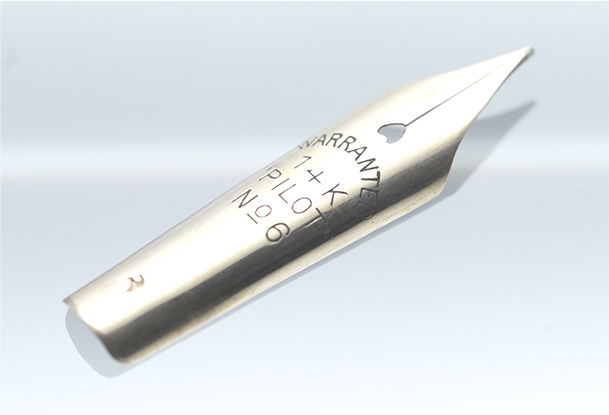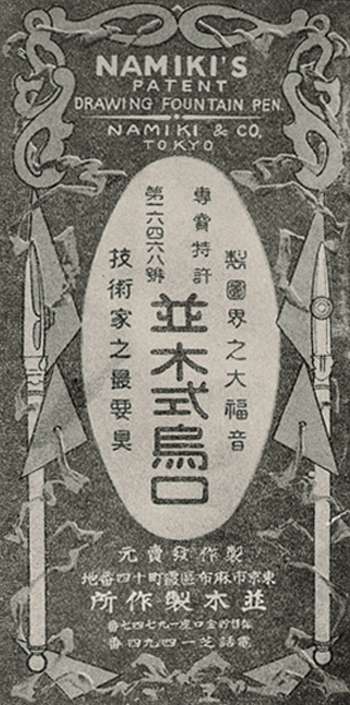Little-Known Episodes prior to PILOT’s Foundation
Seafaring Friendship Gave Rise to Domestically-Produced Fountain Pen


PILOT’s founders, Ryosuke Namiki and Masao Wada, were both graduates of the Tokyo University of Mercantile Marine, which later became the Tokyo University of Marine Science of Technology. They encountered each other when Wada served on board the Ariake Maru, a merchant ship on which Namiki was the chief engineer. Having established a rapport through the shared experience of life at sea for six months and together spoken enthusiastically about a dream of a future in which some day they would like to create something Japanese that the world would be proud to use, the two men formed a firm friendship from that time onwards.
Having left the merchant navy, in 1906 Namiki was invited to teach at his alma mater. Possessing a keen interest in research, aside from his professorial duties Namiki progressed from research into preventing wear on the tips of ruling pens used for guidance in cartography (special implements used for drawing navigational charts) to research into the manufacture of gold fountain pen nibs that would put the results of his research to some practical use. At that time, the fountain pen was gaining attention as a next-generation writing instrument, and there was burgeoning demand.
In 1914, Namiki succeeded in machining a pen point, the most complex aspect of making a gold fountain pen nib, from natural iridosmine* ore from Hokkaido. He resigned from his professorship to concentrate on his research and to develop a gold fountain pen nib.
The making of the gold fountain pen nib involved a prolonged period of trial and error, and Namiki’s attempts were beset with extreme difficulties, so at the end of 1915 his funds were close to running out before he had completed his research. Having previously sent letters to Wada to seek rescue from his plight, Namiki wrote to ask for his assistance again. A telegram from Wada, who like Namiki had as expected left the merchant navy to pursue a life in business, was delivered to Namiki at the beginning of the New Year, on 3rd January, 1916. The text of the telegram read: FIVE THOUSAND YEN SENT – STOP - WILL WRITE AGAIN. At a time when one U.S. dollar was worth about 0.13 of a yen, 5,000 yen was an enormous amount of money and was also the last means Wada had of raising money for Namiki, who reportedly said that he had shed tears over his friendship with Wada.
Namiki’s research was given added impetus, and about a month later, at three o’clock in the afternoon of 9th February, 1916, Namiki completed a 14-carat gold fountain pen nib that had been made entirely in Japan. Namiki shared his joy with Wada, who came running upon receiving the news. As a result, Namiki decided to start a fully-fledged fountain pen company. After that, Wada ceased his involvement in the business he had been conducting and decided to spend his whole life in the fountain pen business with Namiki.
* The tip of a fountain pen nib is welded with a wear-resistant alloy such as iridium (iridosmine). This is called the pen point.

